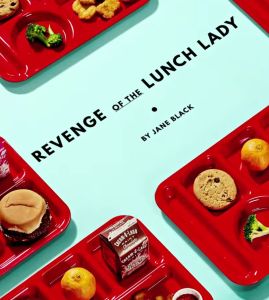
Sam Kaplan
Revenge of the Lunch Lady
How an unassuming bureaucrat outsmarted Jamie Oliver and pulled off an honest-to-God miracle in one of America’s unhealthiest cities.
Huffington Post Highline, 2017
What's inside?
When Jamie Oliver let America’s least healthy city down, a local administrator stepped up.
Recommendation
When America’s unhealthiest city got the Jamie Oliver treatment in 2009, local people resented the foreigner’s intrusion. Oliver’s fresh, homemade food was too expensive, and the children didn’t like it. The British celebrity chef’s approach failed, but county food-service director Rhonda McCoy didn't give up on trying to create fresh, tasty food within her budget. Food writer Jane Black weaves her portrayal of McCoy as a passionate and practical, almost saintly administrator into this eye-opening account of the troubled history of the US National School Lunch Program. getAbstract recommends this article to parents of children who eat lunch at school and anyone interested in nutrition.
Take-Aways
- Vested interests have shaped the US National School Lunch Program.
- In 2009, Jamie Oliver attempted to overhaul the school lunches of America’s unhealthiest city.
- His menus were unpopular and impractical.
- Local food-service director Rhonda McCoy encouraged local school cooks to create low-cost, tasty alternatives.
- McCoy worries that the Trump administration may remove funding that provides free school lunches to children in need.
Summary
In 1946, the US Congress approved the National School Lunch Program to feed children. Apart from making them fit for future wars, Congress designed the program in a way that helped farmers dispose of excess grain, dairy and meat. When 50-odd years later, the government expressed concerns about the fat content, schools couldn’t reduce it because of the ingredients they had to use. Potato, pizza and soft-drink lobby groups opposed attempts to reduce starches and sugars. Various administrations cut subsidies over the years, but the Community Eligibility Provision, an unbureaucratic approach to provide students in the lowest socioeconomic areas with free lunches, has been left in place.
“The National School Lunch Program, an $11.7 billion behemoth that feeds more than 31 million children each day, is a mess and has been for years. Conflicts of interest were built into the program.”
In 2009, British celebrity chef Jamie Oliver visited America’s unhealthiest city to film his reality show Food Revolution. The US Centers for Disease Control and Prevention had nominated Huntington, West Virginia, for its high rates of diabetes and heart disease. Oliver saw school menus which included breakfast pizza and instant potatoes. Yet, the famous chef’s alternative – fresh, free-range school menus – proved to be too expensive, unpopular with most students and too fatty to meet government regulations.
“In 2014, now House Speaker Paul Ryan said that public assistance, including school lunch, offered a ‘full stomach and an empty soul’ because it made kids reliant on government handouts. With the party now in control of Congress and the White House…school lunch is as vulnerable as it’s ever been.”
When Oliver moved on, Rhonda McCoy – Cabell County food-service director and registered dietitian – took over. She had long promoted fresh food, but she also knew it had to be affordable and tasty. One-tenth of students had stopped buying Oliver’s school lunches after a year. McCoy had to reduce her cooking staff to save money, because the government reimburses schools based on how many meals they dish up. McCoy empowered her cooks to invent better, cheaper versions of Oliver’s recipes that would appeal to local palates. She applied for grants and invested in labor-saving equipment. School lunch consumption in Huntington has since risen by 15%.
McCoy adjusts menus and budgets constantly to meet changes in government policy and is wary of politicians who would remove the funding altogether. Republicans have historically spoken out against making children dependent on government assistance. McCoy fears that new policies in the Trump administration might destroy what she has worked to create and that children could go hungry.
About the Author
Jane Black is a food writer who covers food politics, trends and sustainability issues for a variety of publications.
This document is restricted to personal use only.
My Highlights
Did you like this summary?
Read the articleThis summary has been shared with you by getAbstract.
We find, rate and summarize relevant knowledge to help people make better decisions in business and in their private lives.
Already a customer? Log in here.

















Comment on this summary